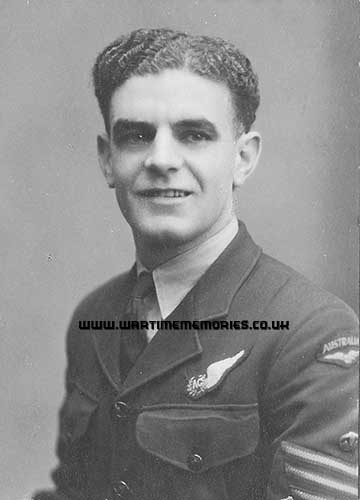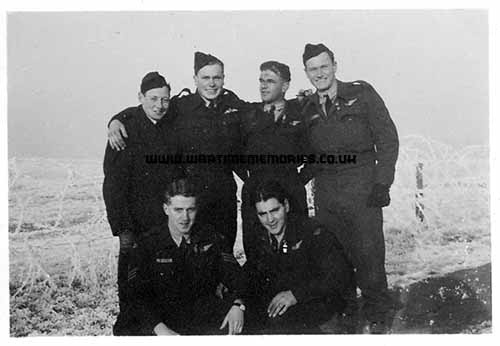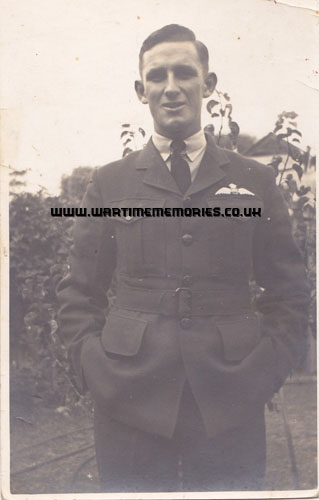|
|
|
Those known to have served at RAF Bottesford during the Second World War 1939-1945. The names on this list have been submitted by relatives, friends, neighbours and others who wish to remember them, if you have any names to add or any recollections or photos of those listed,
please
Add a Name to this List
|
|
|
The Wartime Memories Project is the original WW1 and WW2 commemoration website.
Announcements
- The Wartime Memories Project has been running for 24 years. If you would like to support us, a donation, no matter how small, would be much appreciated, annually we need to raise enough funds to pay for our web hosting and admin or this site will vanish from the web.
- 22nd April 2024 - Please note we currently have a huge backlog of submitted material, our volunteers are working through this as quickly as possible and all names, stories and photos will be added to the site. If you have already submitted a story to the site and your UID reference number is higher than 263973 your information is still in the queue, please do not resubmit, we are working through them as quickly as possible.
- Looking for help with Family History Research?
Please read our Family History FAQ's
- The free to access section of The Wartime Memories Project website is run by volunteers and funded by donations from our visitors. If the information here has been helpful or you have enjoyed reaching the stories please conside making a donation, no matter how small, would be much appreciated, annually we need to raise enough funds to pay for our web hosting or this site will vanish from the web.
If you enjoy this site
please consider making a donation.
Want to find out more about your relative's service? Want to know what life was like during the War? Our
Library contains an ever growing number diary entries, personal letters and other documents, most transcribed into plain text. |
|
We are now on Facebook. Like this page to receive our updates.
If you have a general question please post it on our Facebook page.
Wanted: Digital copies of Group photographs, Scrapbooks, Autograph books, photo albums, newspaper clippings, letters, postcards and ephemera relating to WW2. We would like to obtain digital copies of any documents or photographs relating to WW2 you may have at home. If you have any unwanted
photographs, documents or items from the First or Second World War, please do not destroy them.
The Wartime Memories Project will give them a good home and ensure that they are used for educational purposes. Please get in touch for the postal address, do not sent them to our PO Box as packages are not accepted.
World War 1 One ww1 wwII second 1939 1945 battalion
Did you know? We also have a section on The Great War. and a
Timecapsule to preserve stories from other conflicts for future generations.
|
|
Want to know more about RAF Bottesford? There are:7 items tagged RAF Bottesford available in our Library There are:7 items tagged RAF Bottesford available in our Library 
These include information on officers, regimental histories, letters, diary entries, personal accounts and information about actions during the Second World War. |
|
Sam Robertson Sam Robertson can remember sitting at home at Crawfordston Farm near Annbank, Ayrshire when war was declared — the whole family gathered round the wireless to listen to Chamberlain’s speech.
Sam’s twin brother joined the Navy and owing to colour blindness — could not become a member of aircrew (which was his ambition) so he became a mechanical engineer. Sam’s elder sister joined the ATS and became a member of an anti-aircraft battery near Newcastle. His other sister who was still a schoolgirl at this time became a nurse on leaving school, and spent her career in Ayrshire Central after training as a midwife.
Sam served in 5 Group Bomber Command and served from the world-renowned RAF base at Scampton, Lincolnshire. This base was previously occupied by the Dambuster Squadron lead by Guy Gibson VC.
Sam joined the RAF in February 1944 after being a member of Ayr Training Corp and his first posting was to the selection board in London where he was intrigued to discover that soldiers on guard duty outside the block of flats were armed solely with a pick axe handle! The building was opposite Regents Park — where the soldiers were fed in the Monkey House - and soldiers were marched up and down the road with a white light at the top and a red light at the rear.
Sam’s basic training took place at Bridgenorth, Shropshire. After a weary period there, he was posted to Andreans, Isle of Man for initial training as an air gunner. A training group was roughly 100 individuals. Air firing and flight training was carried out in old Avro Ansons where the crew, other than the turret gunner, had to wind the undercarriage up and down. The flying was all done in daylight and specialised training took place i.e. aircraft recognition (which had to be of a high standard and was a continuing process throughout aircrew flying careers). Here Sam met his first gunner mate - Len Smee, an older career RAF man (i.e. a regular)
Subsequently Sam was posted to RAF Bottesford, Nottingham where the training was on Wellingtons. Wellingtons were single tail units and the toughest things that ever flew. The construction was of geodetic aluminium strutting and the aircraft body was covered with fabric. Here was where Sam crewed up. Aircraft crewing was done like a cattle market in so much as there were pools of all the aircrew trades — pilot, navigator, radio operator, bomb aimer, flight engineer and mid, upper and rear gunners. Sam was a rear gunner. Sam crewed up with a Rhodesian pilot called Juggler Jones who was a well-known rugby player in his own country, all the other crew members were English other than Sam, the only Scot.
Sam was unlucky at RAF Bottesford as he spent double time there with his first crew. During a training flight, the Wellington crashed near Daventry — the plane was landed safely by the pilot, but ran into trees. The skipper was unable to continue flying so the crew were split up and put back into the melting pot. The skipper (a diamond miner to trade) felt he could better aid the war effort by returning home and continue to mine for diamonds - having previously lost an older brother, a gunner in bomber command.
The spirit in the first crew was tremendous but unfortunately this was lost when they were scattered all over the command to re-crew. The second crew was run of the mill in comparison. Sam stayed with this crew for the rest of his flying career. His next station was RAF Silverstone for further training in four engine aircraft i.e. Lancasters.
After completing his flying training he was posted to an operational squadron based RAF Scampton of Guy Gibson fame. This was followed by a lengthy training period of night and day flying. Night flying was introduced by the RAF in the early forties as the loss from daylight raiding was becoming unsustainable due to the numbers of German fighter planes (they had a quicker response time because of their proximity to the operational area). Lancasters had black undersides to minimise reflection if caught in searchlights.
When the war was drawing to a close and bombing commands reduced, the RAF together with the American Air Force were called upon by the Germans to try to feed the Dutch population particularly in the large cities as the condition there was drastic.
Sam remembers being involved in airlifting food parcels to Holland towards the end of the war. Supplies in canvas sacks consisted of tins, dried egg powder etc. The people in The Hague, Rotterdam, Amsterdam were absolutely starving — any crops grown in Holland were being sent to Germany for the people there. People in cities in particular were worst off as country people could benefit by hiding some of their own production for personal or family use. This rescue operation was mounted at the behest of the Germans — possibly in an attempt to mitigate their undoubted guilt.
RAF bomber command agreed to this procedure of low level. Low speed dropping of canvas sacking of food in pre-arranged areas in or adjacent to the cities. In some cases areas selected were near glass houses — which of course became almost targets. Sam says that it was so satisfying to know that he and his crew were doing something to help people who had been through years of hell and still suffering badly.
After the atomic bombs landed on Japan there was no need for the air activity in the Far East and a lot of aircrew were surplus to requirements and relocated to ground jobs. Many of them were sent to RAF Newquay (probably a typing error by the RAF) as drivers. Driver training was undertaken at RAF Weeton, Preston for those unable to drive. They learned to drive everything from private cars to Queen Marys — a long loader that could carry the hull of an aircraft. Sam went to Germany as a driver for the RAF
|
W/O. Raymond Michael McDermott 100 Squadron My grandfather, Mick McDermott, served as a wireless operator air gunner in a Lancaster crew. The other members of the crew included:
- Gordon Kerr: Bomb Aimer
- "Butch" Craven: Tail Gunner
- Peter Wyga: Pilot
- Ralph Robertson: Navigator
- "Ni**er" Crane: Mid Upper Gunner
He arrived in the UK from Sydney in January 1944 and went initially to RAF Station Whitley Bay, then Padgate and Hoylake. Between July 1944 and March 1945 he was in 8 AFU, 29 OTU and 26 OTU. On 9 March 1945 he was at 71 Base, on 16th March 72 Base, 31 March RAF Bottesford and 11th May (ie after VE Day) 100 Squadron. On 26 June 1945 he went to 9 ACHU, then 11 PDRC and home to Australia in Nov 1945.
|
Sgt. Frank Grey 467 Squadron (d.18th August 1943) Sergeant Frank Grey was my great uncle. He served as a bomb aimer on a Lancaster bomber in 467 Squadron under Bomber Command and was based at RAF Bottesford.
He was shot down on 18th of August 1943 in the famous raid on Peenemunde, the top secret weapons research area where the Nazis were developing the V1 and V2. Frank and the crew all perished. The raid was carried out in moonlight and at unusually low altitude to ensure maximum accuracy and damage. A diversionary attack on Berlin to distract enemy fighters had run its course and by the time they began their bombing runs enemy fighters were on the scene and the bombers of No 5 group, illuminated by the fires on the ground and moonlight paid a heavy price.
|
Flt.Sgt. Robert Ingersole Gates 467 Squadron (d.29th June 1943) Robert Gates served with the Royal Australian Air Force
He was born on the 9th of August 1920 in Bridgetown, WA
and enlisted on the 21st of July 1941 in Perth, WA.
He gave his Next of Kin as Caroline Gates.
He served with 467 Squadron at RAF Bottesford and was killed on the 29th of June 1943, but his body was was not located at the crash site.There is a group who are now doing research where the Lancaster was discovered, hopefully, they may find his remains.
The Crew were:
- Flt Sgt R.I.Gates, missing.
- Sgt G.R.S Cayless, buried at Jonkerbos War Cemetery Nijmegen
- Sgt H.H Mooney, buried at Jonkerbos War Cemetery Nijmegen
- Sgt E Pike taken POW
- B.H Dolby taken POW
- Sgt T.W.A Copeland RCAF buried at Jonkerbos War Cemetery Nijmegen
- Sgt J.H Hole buried at Jonkerbos War Cemetery Nijmegen
|
Recomended Reading.Available at discounted prices.
|
|
|










